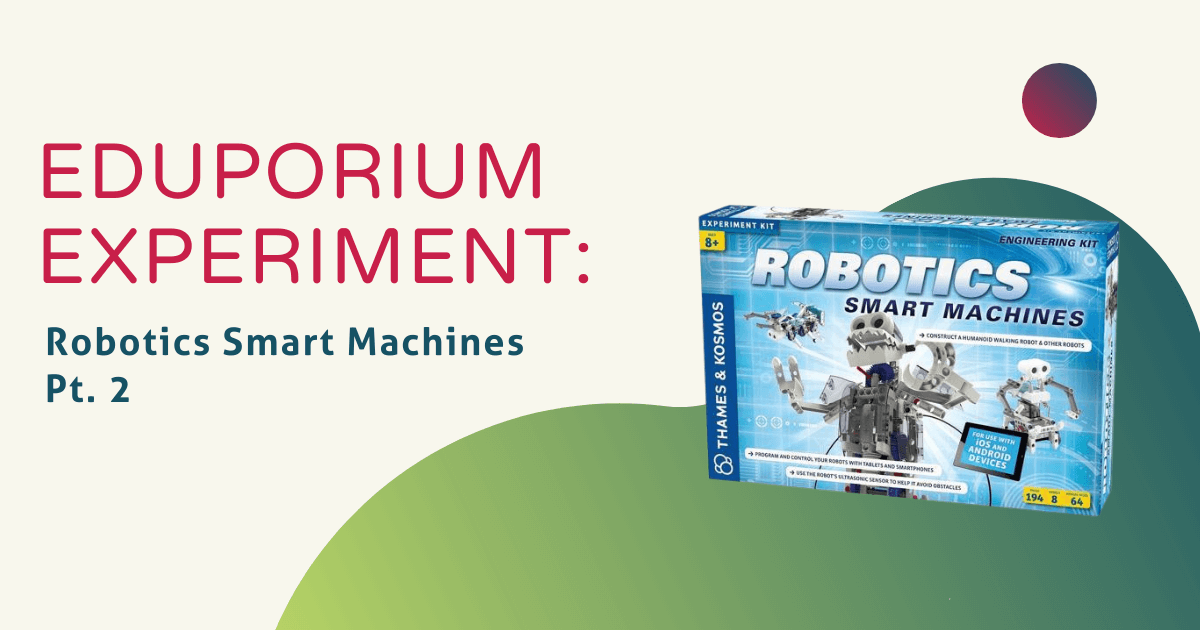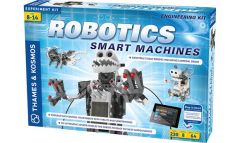As a company, Thames & Kosmos is known—at least throughout our office—as a company that perfectly combines technology, construction, and just about every STEM discipline. They have a number of hands-on kits that help kids learn the basics of solar energy, coding, atoms, and a ton more. This week, we dove into their Robotics Smart Machines Kit, which empowers students to build and then control innovative robotic machines!
Many of the Thames & Kosmos kits combine multiple STEM disciplines and the Smart Machines Kit is a fine example of that. First, kids get the engineering aspect of STEM and they get it hard! This kit comes with what seems like hundreds of specialized pieces and step-by-step guides with in-depth illustrations so they know exactly how to connect them to form the structure of their smart machine. I rolled up my sleeves and put its simplicity to the test. To my surprise, it actually was pretty easy to follow thanks to the breakdowns and clarity in the manual.
It took a little while, but, once I got the robot built, I was feeling pretty good. The kit is a bit advanced—probably suitable for fourth or fifth grade and up—so I did feel quite accomplished when I got all the pieces in the right places and everything held together perfectly! As I mentioned, there are multiple components to the Robotics Smart Machines Kit and constructing the robot is only the first one. Once students get the robot built, it’s time for them to code it! To be completely honest, I had to save the coding part for another day because it did take a bit of time to build the robot, but that’s okay—it would give students something to look forward to for the next day of class!
Back at it, I sat down and started my coding experience with the Smart Machines Kit. To get started, students would need a smartphone or device with a Bluetooth connection and the Robotics—Smart Machines app, which they can find by typing exactly that into the app store. It’s very simple to navigate and it’s pretty cool how it works. The app actually uses signals emitted by the robot’s ultrasonic sensor (one of the biggest and most important components of this hand-built bot). I learned I could create programs to control the robot or just drive around using the remote-control mode, which is how I started.
There are seven programs already written into the app that work with the Robotics Smart Machines Kit. It got a little tricky, but I think I was able to figure it out and I can definitely see how this would be a very useful tool for today’s students. The programming language is visual and very simplistic so that students without a lot of coding knowledge don’t get overwhelmed or fall behind other students in the class. Due to its high levels of helpfulness and its definite relevance in the real world, the Smart Machines Kit gets our approval and can help students build some of tomorrow’s most important STEM skills.
To get a Robotics Smart Machines Kit of your own, visit the Eduporium store! And, be sure to look out next Wednesday for the next edition of the Eduporium Experiment coming at you a week from today!




